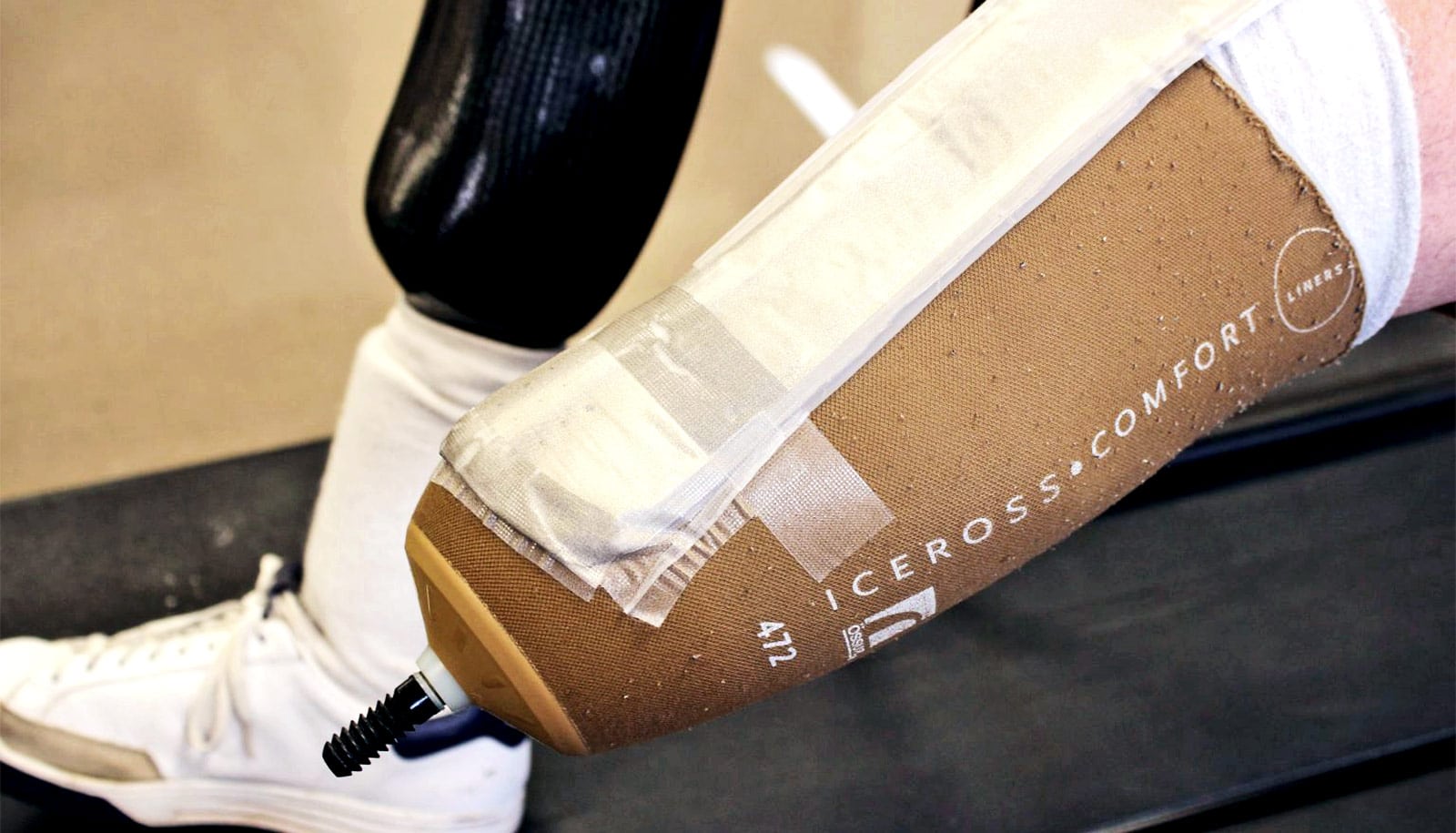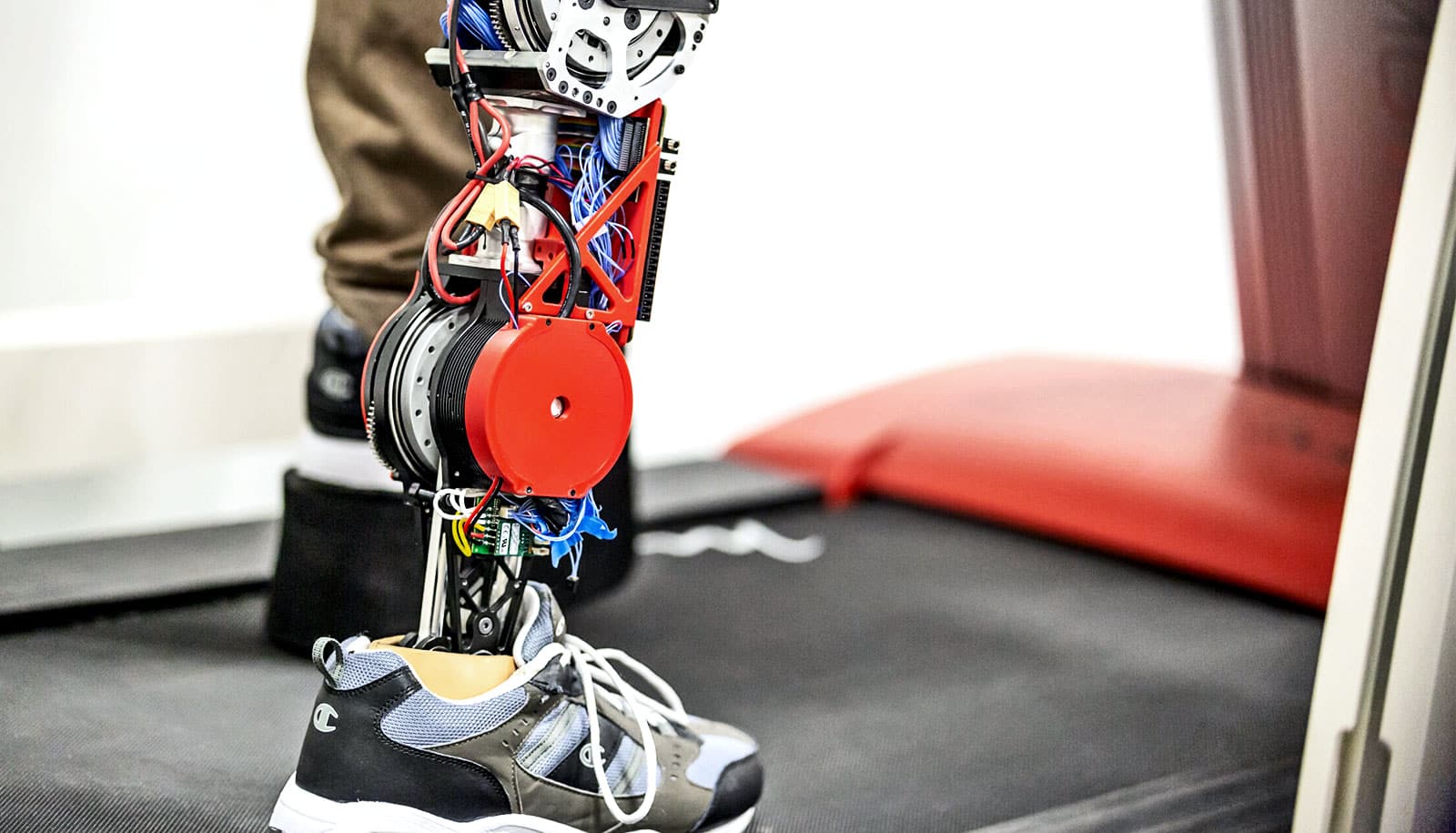A soft, flexible sensor system could help map problematic pressure points in the socket of an amputee’s prosthetic limb, researchers report.
The lightweight, soft textile-based sensor prototype patch incorporates a lattice of conductive yarns and is connected to a tiny computer. Researchers tested the system on a prosthetic limb and in walking experiments with two human volunteers and discovered it could reliably track pressure changes in real time.
“What people commonly use to measure pressure within prosthetics are rigid sensors,” says Jordan Tabor, a graduate student in the North Carolina State University College of Textiles and first author of a study on the patch in IEEE Sensors Journal.
“They’re hard, they’re bulky; they can be heavy. These are not things that amputees can use on a daily basis because rigid sensors negatively affect the fit of amputees’ prosthetics. Rigid sensors can also cause discomfort. We designed sensors that can be integrated into textiles in a way that doesn’t cause any additional discomfort for the user, and could be worn on a more regular basis.”
In one experiment, the researchers tested whether the patch could detect changes in pressure when they placed it on an artificial limb, turned at different angles. Then they used it to test pressure changes when an able-bodied person wore the sensor patch while walking with a bent-knee adaptor, and while shifting their weight between legs.
“You cannot put materials next to the skin that are uncomfortable and may not be safe. So we are putting things that are used around us all the time, and are soft and flexible.”
In their last experiment, a volunteer with an amputated lower leg wore the patch on the liner of their prosthetic limb in areas where the prosthetic limb typically applies higher pressure. They tested the sensor patch while the volunteer shifted weight and walked on a treadmill. The system was durable and could reliably monitor pressure changes in the socket.
“This approach that we thought of a few years ago does work, and it’s a readily manufacturable technology,” says Tushar Ghosh, a professor of textile engineering, chemistry, and science and the study’s co-corresponding author.
“You cannot put materials next to the skin that are uncomfortable and may not be safe. So we are putting things that are used around us all the time, and are soft and flexible.”
Part of the researchers’ work involved designing the sensor system to be lightweight and small enough for human use. The researchers created the sensor patch by sewing the yarns together in such a way that they created an electromagnetic field. When the researchers sewed the yarns into a lattice, and applied a small amount of electrical power using a small battery, they could measure the amount of electrical charge drawing the yarns together at each lattice point.
The charges changed depending on how close the yarns were together, which related to how much pressure the wearer applied. They connected yarns, insulated them, laid them on a textile fabric, and connected them to a small electronic device to capture the data. They also included a small radio in order to wirelessly track the measurements.
“We connected the textile fibers to an electrical circuit that is a little larger than a quarter, and that can scan as many as 10 by 10 fibers,” says Alper Bozkurt, professor of electrical engineering and a study co-corresponding author. “That gives us 100 points of measurement. Everything is connected to a tiny microcomputer, which has a radio for wireless data tracking.”
While researchers used a yarn commercially available for the study, they are also working on developing their own textile fiber to detect more than just pressure changes in the socket of an amputee’s prosthetic limb.
The team will next integrate the sensors into prosthetic sockets directly, or into a wearable item. They would also need to study the sensor’s potential clinical value in a larger study.
“Our broader vision is to design something like a sock, or to integrate the sensor system into the prosthetic socket, so when a person dons their prosthesis, they are able to monitor what’s happening in terms of pressure distribution and other measurements,” says Helen Huang, a professor in the University of North Carolina/NC State joint department of biomedical engineering and a senior co-author of the paper. Huang led a team of rehabilitation engineers to conduct the human experiments.
The NC State Chancellor’s Innovation Fund, the NC State Provost Fellowship, the National Science Foundation, and the National Institutes of Health supported the work.
Source: NC State



